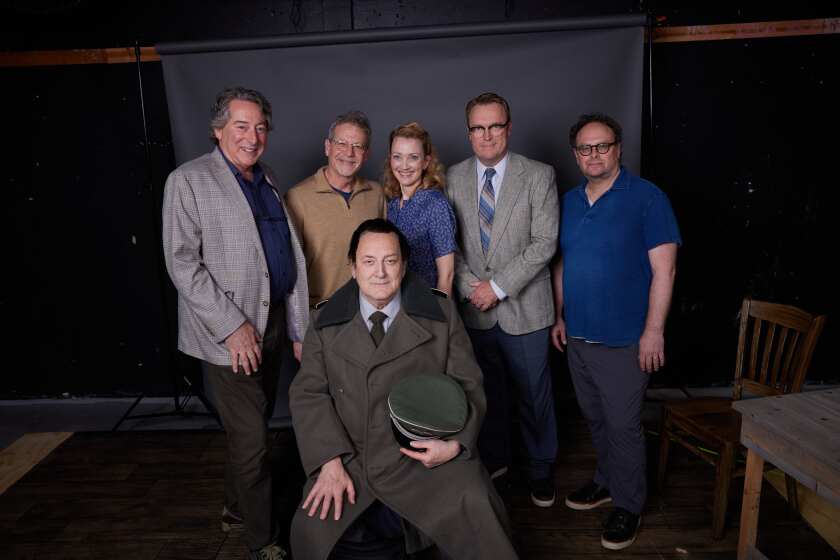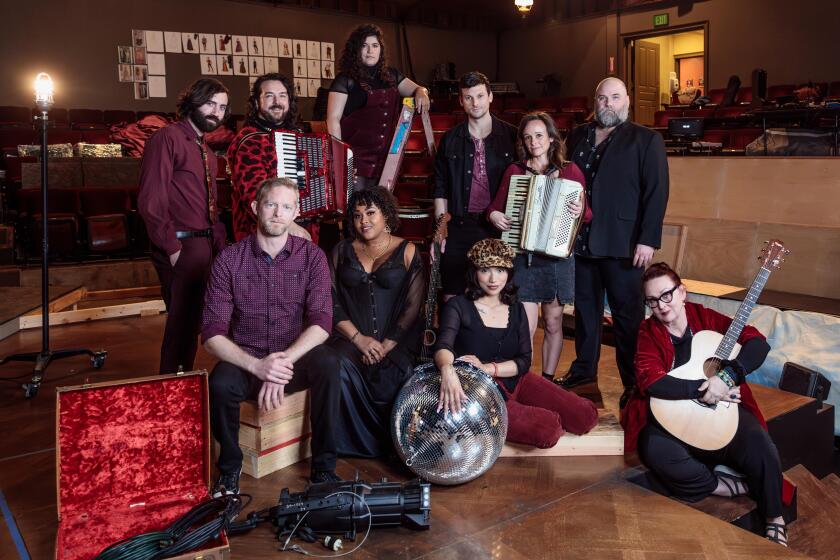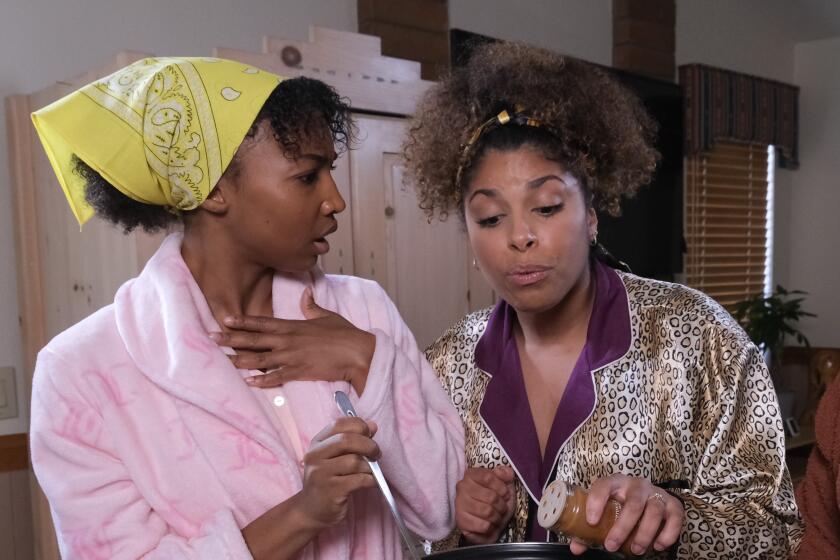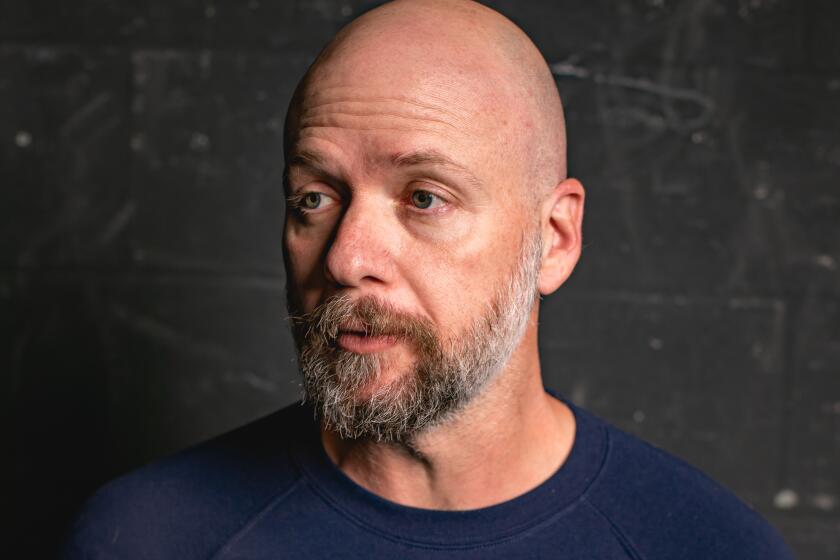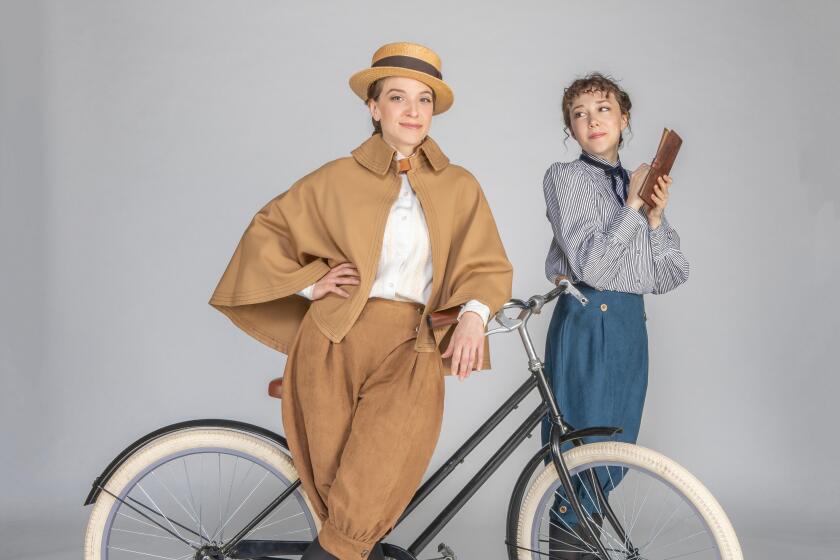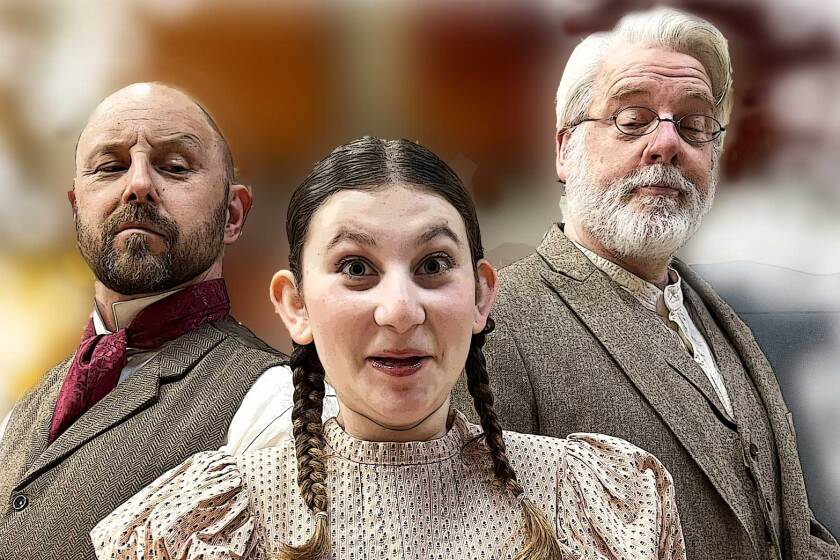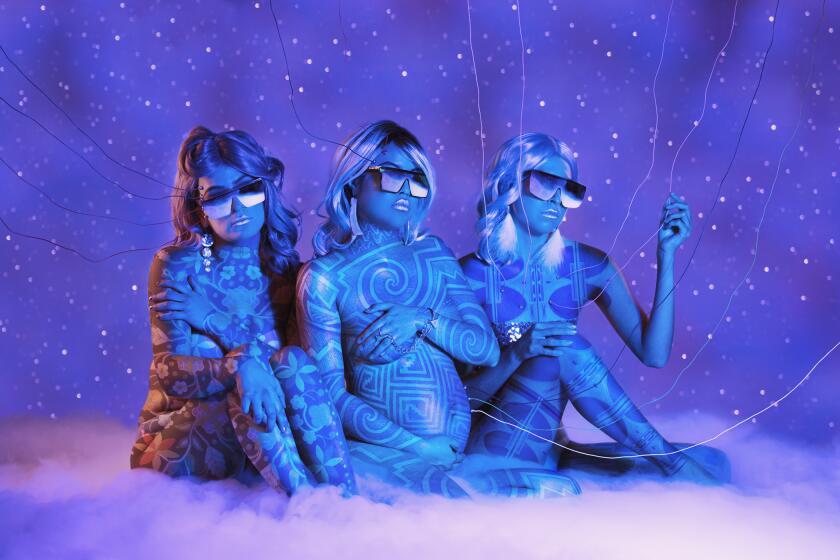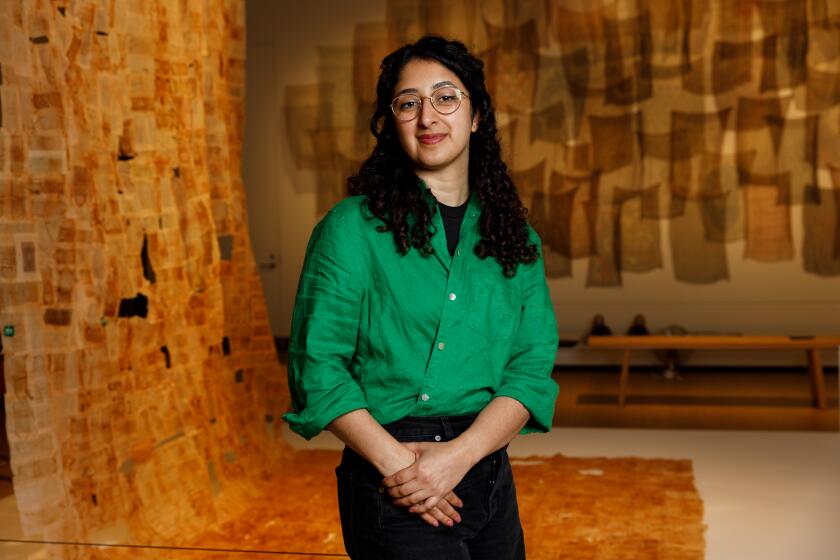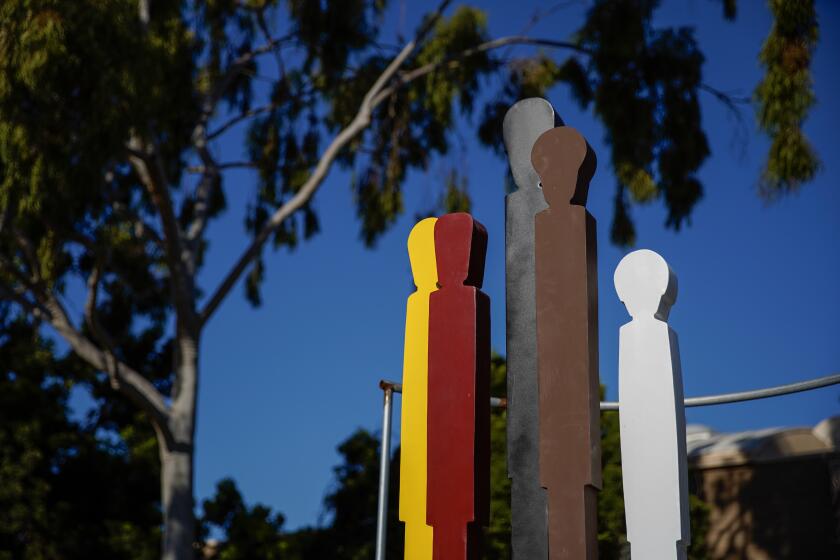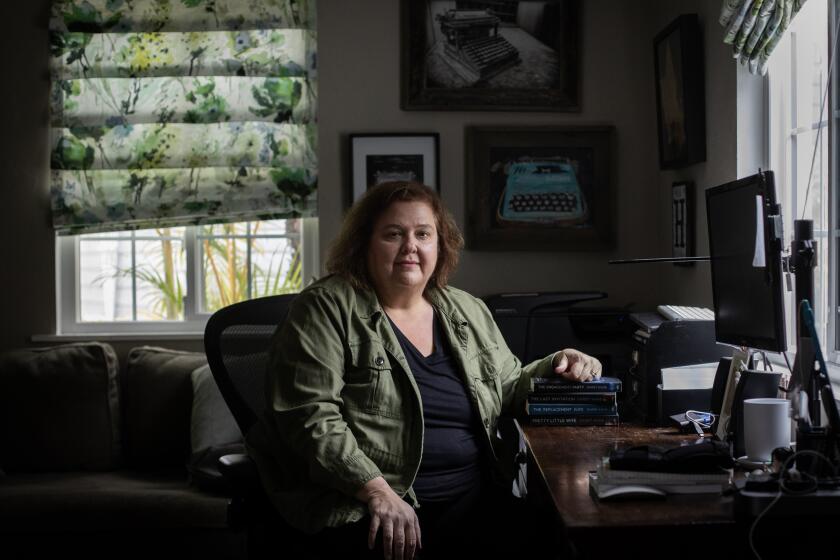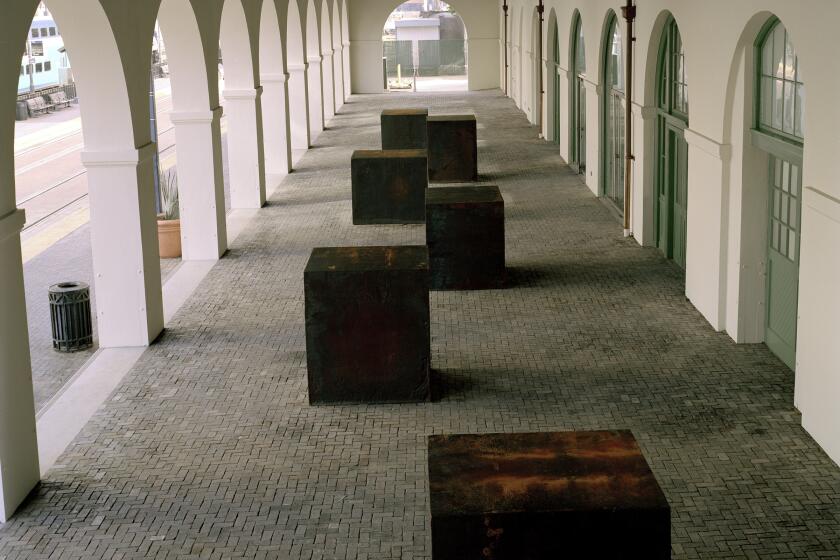In ‘The Buses Are Coming,’ the story of the Freedom Riders

The San Diego African American Museum of Fine Art has opened an outdoor exhibit at the Quartyard in downtown’s East Village, on 13th and Market
In 1961, more than 300 men and women, both Black and White and mostly under 30 years old, put their lives on the line in the cause of racial justice. In an effort to test rulings by the Supreme Court that declared as unconstitutional “Whites Only” lunch rooms, restrooms and bus terminals as well as segregated trains and buses, the Freedom Riders traveled on buses from the North into the Jim Crow South knowing that violence and incarceration likely awaited them.
In recognition of these activists’ courage and commitment, the San Diego African American Museum of Fine Art (SDAAMFA) has opened an outdoor exhibit at the Quartyard in downtown’s East Village, on 13th and Market. “The Buses Are Coming” includes historical photographs, videos, interactive audio interviews and, making a statement all their own, arrest “mug shots” of the Freedom Riders from more than 60 years ago.
The late congressman John Lewis was among the original group of 13 Freedom Riders. Others who rode buses into the South included civil rights activists Stokely Carmichael, Diane Nash, Tom Hayden and minister James Bevel.
Earlier this month, the SDAAMFA hosted a group of Freedom Riders and activists at the opening of the exhibit: Luvaghn Brown, former San Diego mayor Bob Filner, Max Pavesic, Carol Ruth Silver, Hezekiah Watkins and Lewis Zuchman.
Carol Ruth Silver is the author of “Freedom Rider Diary: Smuggled Notes from Parchman Prison.” She was working as a clerk typist at the United Nations in May of ’61. “I was transfixed by the scenes of what was happening in the South and particularly the burning of a Greyhound bus,” Silver recalls. “I thought ‘This is absolutely wrong’ and decided to do something about it. So I and others, Black and White, said ‘The time is come.’ We got on these commercial buses and we rode through the South integrating the restrooms, the waiting rooms, the places that had signs like ‘Whites Only’ and ‘Negroes Only.’”
Was she frightened?
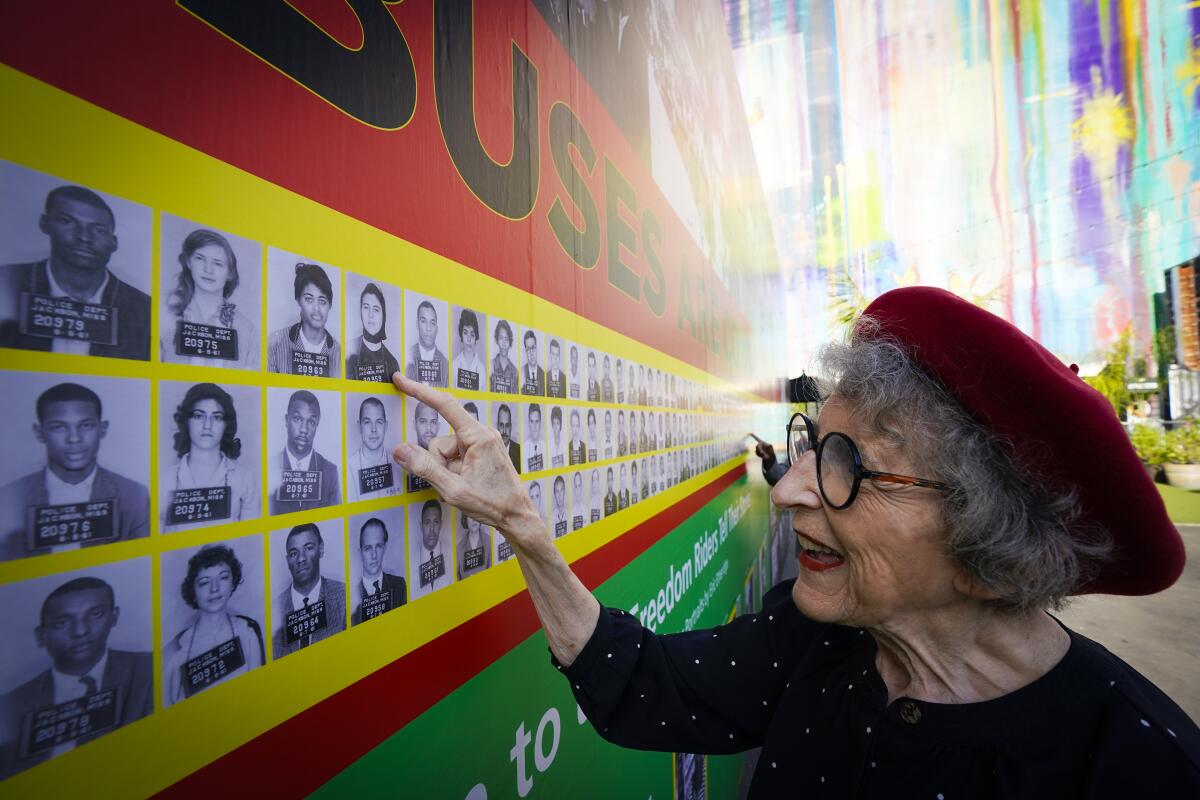
“I was petrified,” Silver says. “I would’ve been dumb not to be afraid. But sometimes you think you can’t possibly do something and you do it because it is necessary to save somebody’s life or in this case to save a whole set of people from a lifetime of discrimination.”
Upon reaching Jackson, Miss., Silver and the others riding the bus were arrested, tried and convicted. She spent 40 days in Parchman Prison, now known as the Mississippi State Penitentiary.
Citing ongoing “generational discrimination,” Silver says strides toward justice and equality have been good, but “not good enough.” Still, she is proud of the Freedom Riders and their bravery. “We were a generation of ‘upstanders,’ people who saw something wrong and thought, ‘I’m going to stand up and I’m going to make it if not right then at least better.’ That’s what we did.”
At just 19 years old, Lew Zuchman was, he says, “involved in organized crime. My goal was to be the first Jew in a Mafia family.” He’d been in and out of trouble all his young life and was hanging around pool halls in New York.
Seeing his childhood idol, Jackie Robinson, on “The David Susskind Show” on TV led him to the Freedom Riders. Robinson was a guest, as was Roy Wilkins, at the time executive secretary of the NAACP. Wilkins was cautioning people about getting involved in the Freedom Rides, Zuchman said. But his idol Robinson “teared up and said if these people feel it is their time to stand up, how can we not support them?’ That’s when I decided to be a Freedom Rider.”
Zuchman and six others boarded a regular Greyhound bus in July ’61 bound for Jackson. Violence was minimal along the way, but when they arrived in Mississippi, “a mob was descending on the bus station,” then “we were incarcerated. They wanted to fine us $400 and we refused to pay that. They never told us when we would get out. I was in my 42nd day when they called my name.”

Fearing attacks from the Ku Klux Klan upon their release, Zuchman and others from the bus stayed with Black families who smuggled them out of town safely.
Unlike Silver, Zuchman believes things today are “much worse. Anyone who denies that I don’t understand.” But he has no regrets about his Freedom Ride.
“We came from all over the country — different races, religions, male and female,” says Zuchman, who runs community centers and after-school programs in Harlem, East Harlem and The Bronx. “That was wonderful. Each of us made a decision to do something that was very difficult at the moment.”
Luvaghn Brown didn’t ride one of the buses, but in Jackson, he was a young Black man who’d been arrested and jailed for seeking service in a Woolworth’s store and for trying to integrate a lunch counter.
A meeting with visiting Freedom Riders Bernard Lafayette and James Bevel got him interested in their movement.
“I didn’t think there was a role for us, the young Black men of Mississippi, to play but Lafayette talked about nonviolence and it just appealed to me.
“My grandmother, who was one of my favorite people, was afraid for me. She said, ‘They’re going to kill you.’ I knew that you could get killed, but I didn’t think about that. I just thought we were going to change the world. I felt I was doing something important.”
People like Brown who stood up for their rights in the Deep South of the 1960s were just as integral to the civil rights movement as those who came from the North.
“I was appreciative of the fact that people rode the buses into Jackson and that people throughout the world saw our struggle,” Brown says, “but I was really proud of the people from Mississippi and Louisiana who got into the fight.”
‘The Buses Are Coming’
When: Through Sept. 7
Where: Presented by the San Diego African American Museum of Fine Art at the Quartyard, 1301 Market St., San Diego
Admission: Free
Online: sdaamfa.org
Coddon is a freelance writer.
Get U-T Arts & Culture on Thursdays
A San Diego insider’s look at what talented artists are bringing to the stage, screen, galleries and more.
You may occasionally receive promotional content from the San Diego Union-Tribune.

